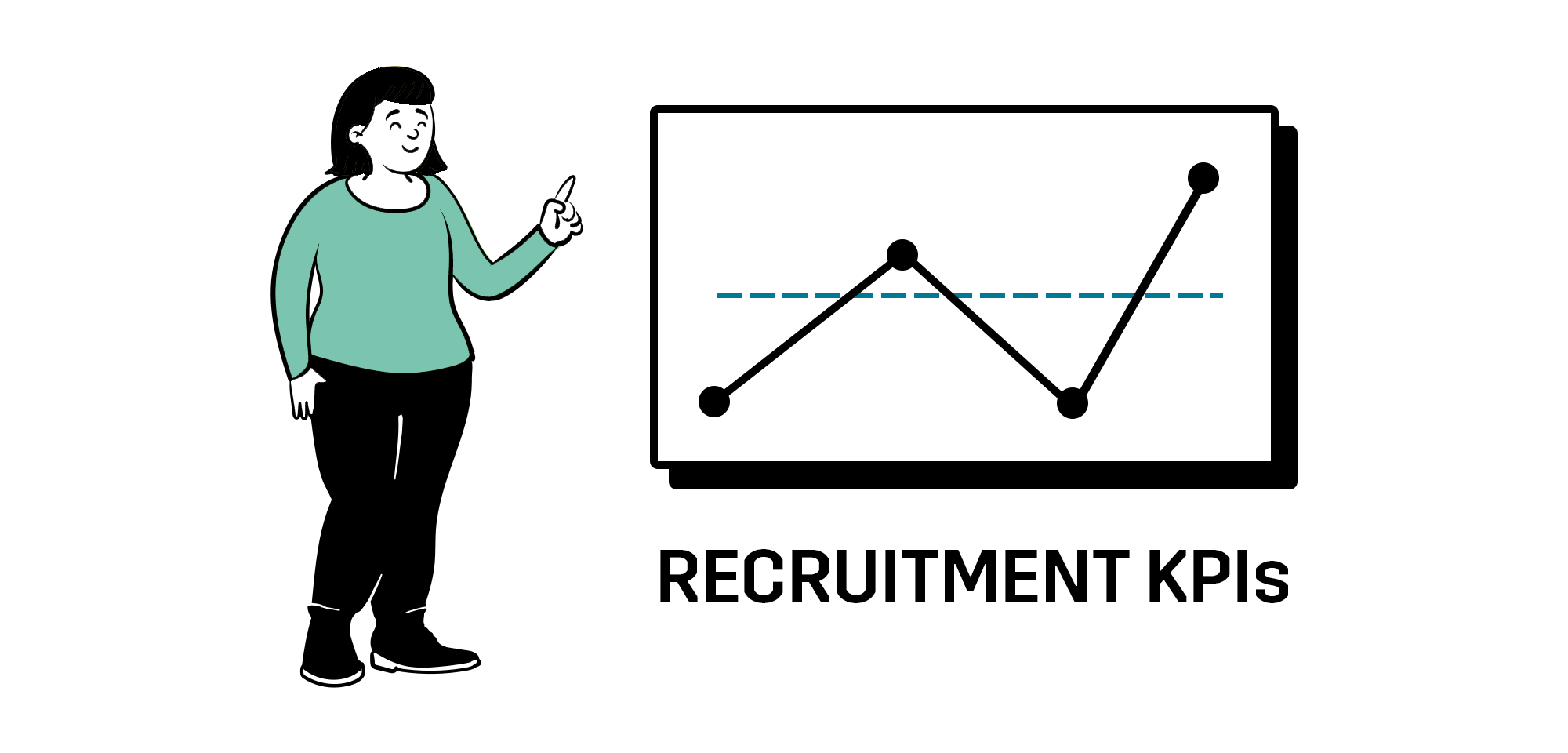
Rosie Greaves
4 Recruitment KPIs Every Hiring Manager Should Use to Measure Performance
Wondering which recruitment KPIs to start with, then we have the answers.
— Denna sida är också tillgänglig på Svenska 
Efficient internal processes are critical for any forward-thinking business wishing to compete, evolve, and thrive – and recruitment is no exception.
This begs the question, how do we streamline HR to ensure we’re hiring as efficiently and effectively as possible?
The answer: Recruitment KPIs
Key performance indicators AKA KPIs, appear on your HR analytics dashboard and provide the data you need to better evaluate the:
- Success of your recruitment campaigns
- Quality of your candidate experience
- Tell-tale signs of a first-rate candidate
…Just to name a few.
In short, when you embrace KPIs, you’re better positioned to make data-fuelled decisions to enhance your recruitment processes.
So, which KPIs should you keep an eye on? Continue reading to find out…
1. Quality of Employees Hired
When you set out to recruit a new employee, you want to hire candidates that:
- Compliment your workplace culture
- Boast the necessary skills and experience to thrive
- Are the best of the best
To analyze whether your recruitment campaigns generate these kinds of hires, you can start measuring and tracking their quality.
This kind of KPI is very specific to you and your organization. Every enterprise has its own expectations and requirements for what they deem the ‘perfect’ candidate.
However, that being said, there are a few ways you can measure the quality of your recruits. For instance, you can talk with their supervisor to see if they’re satisfied with their overall performance.
Other factors you could evaluate include:
- How well they ‘gel’ with the team
- Their engagement and attitude towards their work and colleagues
- The outcome of their work
By measuring your recent recruits’ quality, you can use this as a benchmark for your future hiring needs. This kind of data gives you a better grasp of what comprises your ‘ideal candidate’ – i.e., their traits, experience, skills, etc. With this info to hand, it’s much easier to identify candidates who are more likely to meet your business’s needs.
2. Application Completion
It’s not unusual for organizations to receive incomplete applications or for candidates to abandon the process altogether. Perhaps they lost interest? Or, maybe the length/format/style of the application put them off?
Job seekers require an efficient application process, and as such, are easily put off by intricate and extensive formats.
In light of that, your application completion rate is another essential KPI worth tracking. Namely, because you risk losing top-quality talent if applicants aren’t satisfied with the application process.
If your application completion rates are looking a little low (or if you just want to improve them), review your current online application process. Then, make whatever changes are necessary to ensure it’s as concise and as accessible as possible.
For instance, did you know candidate application rates (on average) increase by 34% when a job ad includes a video? So, if you’re looking to improve this KPI, this is a great place to start!
3. Candidate Satisfaction
After the recruitment campaign has come to an end, seek feedback from applicants. Send out a simple questionnaire to determine how they found the application process and whether they were satisfied.
With this feedback, you can then put into action any glaring improvements that need making. In the long run, this will strengthen your employer brand and increase your application completion rates -win-win!

4. The Time It Takes to Make a Hire
Generally speaking, the quicker you’re able to make a hire, the better. However, the amount of time it takes to fill a position will vary widely from role to role and industry to industry.
For example, finding a new intern won’t take as much time as filling a vacancy in your C-suite. After all, the power, experience, and responsibility that comes with the latter demands that you dedicate more time and commitment to finding the right fit.
For the uninitiated, the ‘time to hire’ KPI encompasses every stage of the recruitment process, from the job ad, shortlisting and interviewing candidates, and then, finally, hiring your chosen recruit.
By measuring the time your recruitment process takes from start to finish, you’ll get a better idea for how long you need to budget for finding your next recruit. This KPI is also a good indicator of whether it’s worth investigating ways to speed up the process. Are there tasks you can automate? Are you making full use of your HR analytics software? Are there stages of your recruitment funnel that you could streamline? And so on…
Are You Ready to Start Using Recruitment KPIs?
We hope having read this article, you now have a better idea of which Recruitment KPIs to focus on. Of course, there are lots of others to choose from, but if you’re new to HR analytics, then these are a great place to start.
For more information on the subject, download our free eBook today: ‘8 Useful Key Metrics To Measure Your Recruitment Process.’ Enjoy!
Get notified on new blog updates
+ get our popular candidate experience ebook for free
[activecampaign form=15 css=0]